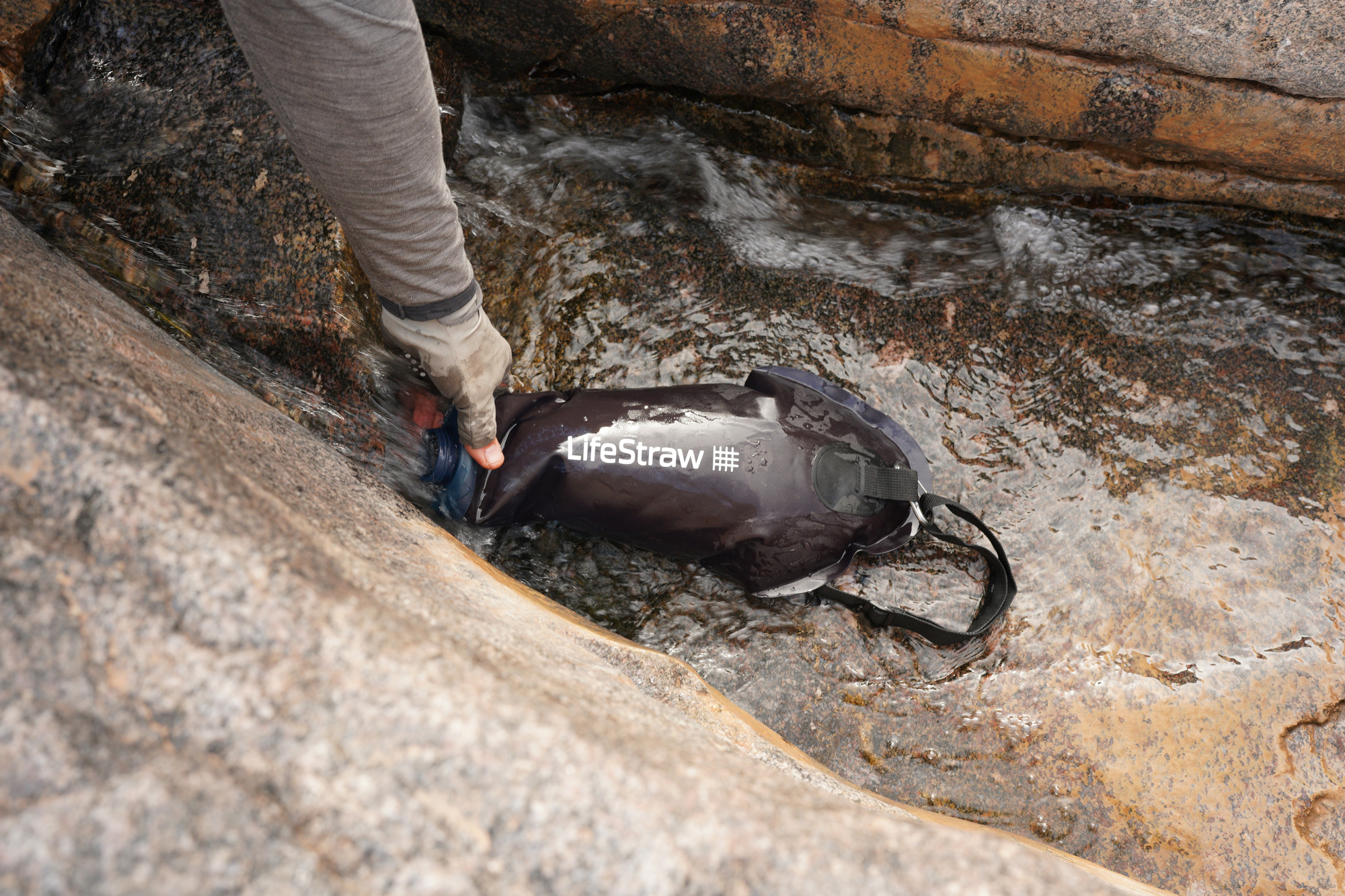Photo: Thomas Ward
Lifestraw Peak Series 3-Liter Gravity System
Overlanders are incredibly adaptable, and we have figured out how to thrive in a wide variety of environments. But we’re still human, and no matter how far into the backcountry we manage to travel, we can’t neglect basic necessities, including clean drinking water.
It’s a gamble to drink directly from an untreated water source because although that crystal-clear pool might look clean, it could be harboring harmful bacteria, parasites, and even microplastics. That’s why a mandatory item on your packing list for any overland trip should be some means of purifying drinking water. There are a wide variety of options including iodine tablets, two-part liquid purification solutions, and mechanical water filters. While all of these aforementioned options work, I prefer the non-chemical mechanical filters.
To that point, I just returned from a four-day backpacking trip on the edge of Colorado and Utah where I tested Lifestraw’s newest filter system: the Peak Series 3-Liter Gravity Filter. I put this piece of kit to use, filtering multiple gallons of water from scummy, bug, and algae-filled slickrock puddles (some “clean” looking sources too). The good news: I lived to tell the tale.
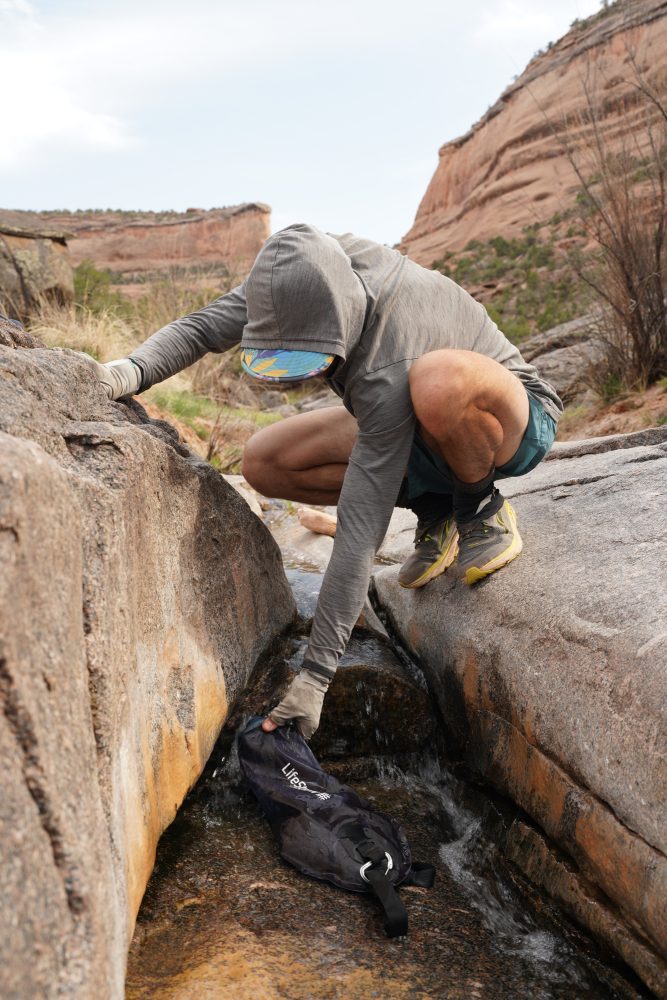
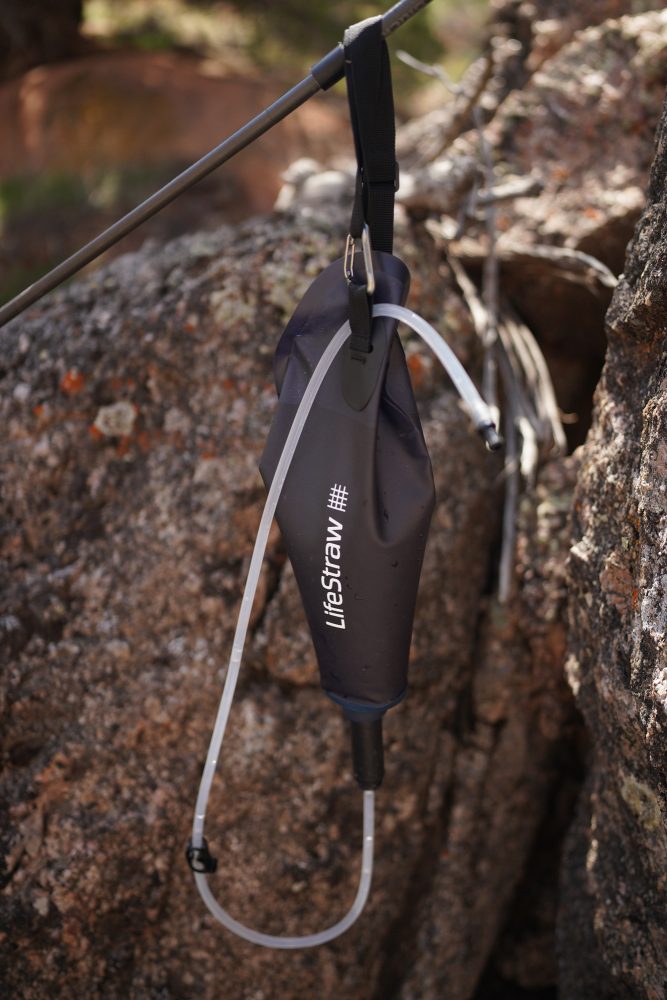
Left: Filling the gravity bag is easier with flowing water sources (photo: Thomas Ward). Right: Trees are not necessary: hang the peak gravity bag from a roof rack or a trekking pole with the integrated lanyard and carabiner.
Gravity systems, like the Peak, rely on pressure to force dirty water through a hollow-membrane filter. In this case, after filling the Peak’s BPA-free gravity bag, you hang it from a secure anchor, like a tree limb, via the attached lanyard and carabiner. Now let gravity do the work of pushing the dirty water through the tiny little filter.
Thanks to a quick-connect fitting, you can connect the Peak directly to a variety of hydration bladders (I used an Osprey 2.5-liter) for a hands-free filling experience. Filtering three liters of water took approximately 10-20 minutes depending on turbidity (amount of suspended sediment in the water).
Traditional water filters require time and effort to pump, and in this regard, Lifestraw’s Peak system is easier to operate. You simply fill it, hang it, and gravity does the hard work. This frees you up to complete other tasks simultaneously, like setting up your tent or preparing a meal.
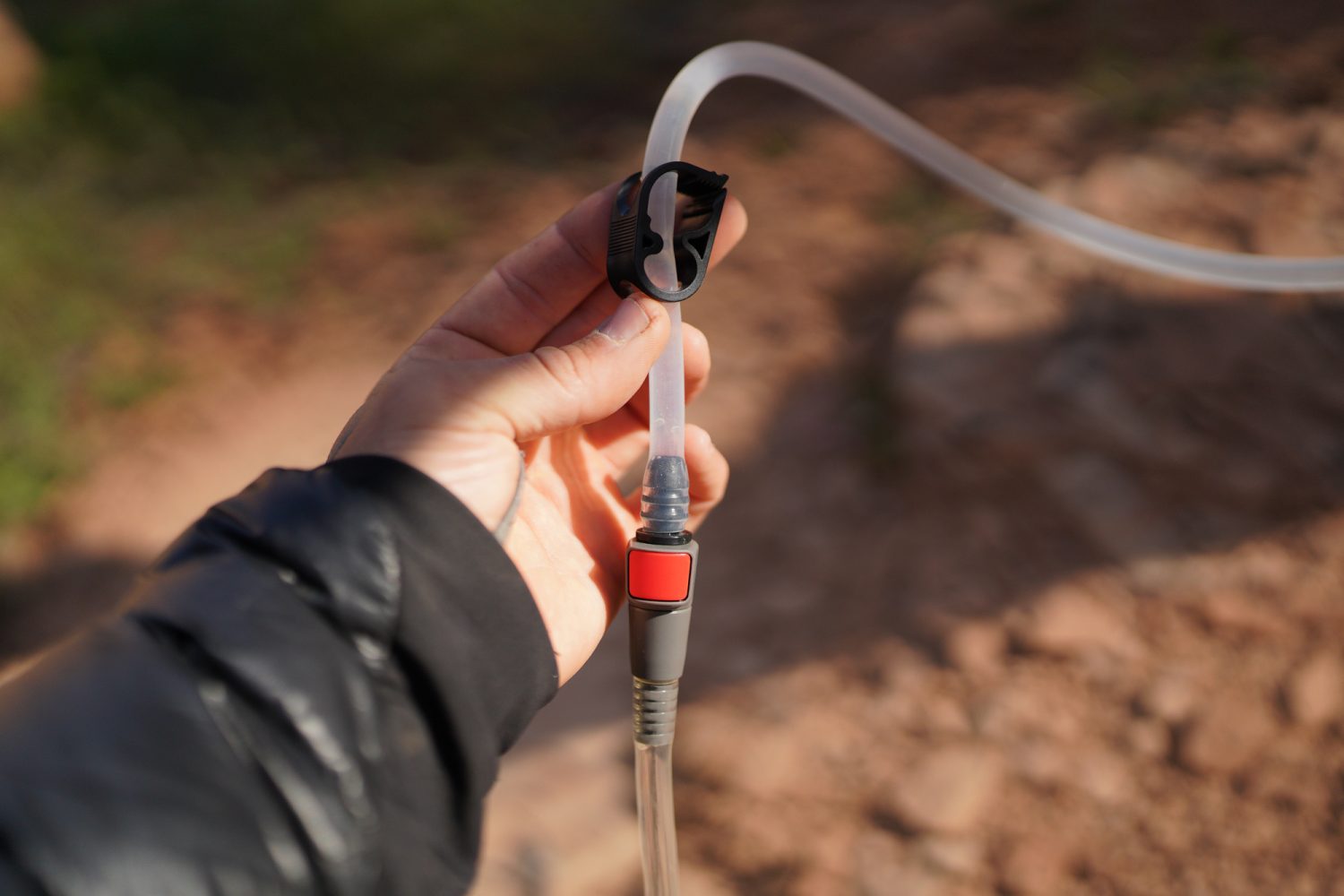
Other benefits of this system are its simplicity: there are no moving parts. And fewer parts in general, compared to pumps, seems to be a more resilient solution, with fewer parts that could fail in the field. Replacement filter elements cost less than $20 each, filter up to 500 gallons of water, and weigh just 1.4 ounces, so you could easily carry a spare, just in case. Finally, the whole kit is very light, weighing in at just 8-ounces including the gravity bag and hose, and back-flushing syringe.
For prospective owners, know that it can be difficult to fill the gravity bag directly from non-flowing water sources like shallow puddles, or sandstone potholes. To address this, I would recommend carrying a lightweight water bottle (Smartwater is a favorite for this purpose) for scooping and pouring water into the bag. You will also want to carry the included back-flushing syringe on longer trips to periodically flush sediment out of the filter. This is especially relevant if you will be filtering from water sources with high turbidity; the flow rate of the filter that I tested was reduced by about half over four days of use without any back-flushing.
$60 | lifestraw.com
Lifestraw Peak Series Straw
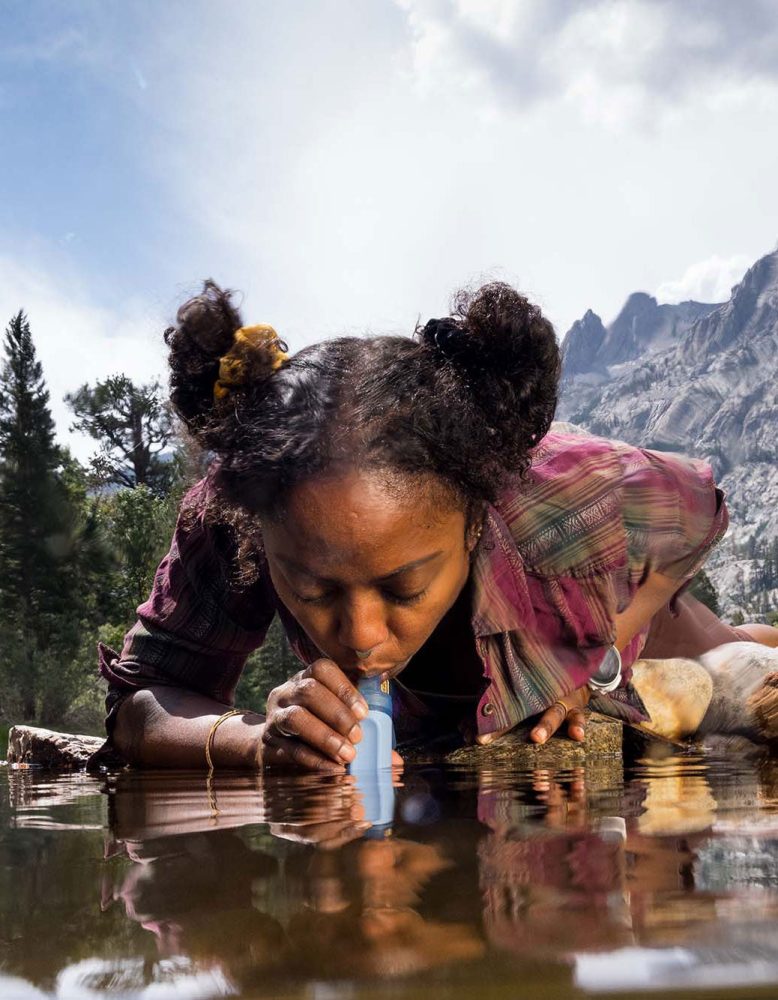
This year, Lifestraw’s personal straw filter received a redesign for the first time in 17 years, relaunching in March 2022 with the company’s brand-new Peak series. The straw’s weight is slightly heavier at 2.3 ounces over the original’s 2 ounces but is hardly noticeable, and design improvements to the top and bottom caps are worth it. Lifestraw claims an enhanced flow rate for easy sipping and reduced clogging issues due to its reengineering and membrane configuration. While I can attest to its ease of use, I didn’t have an old model on hand to compare. The straw has the same filtering benefits as the rest of the Peak series, filtering particles with a greater than .2-micron pore size, comes in black or blue, and can process up to 1,000 gallons. You can use it as a straw by dipping it into the dirty water source or unscrew the bottom cap and thread it to a single-use water bottle or standard gravity hydration hose. (Tena Overacker)
$20 | lifestraw.com


